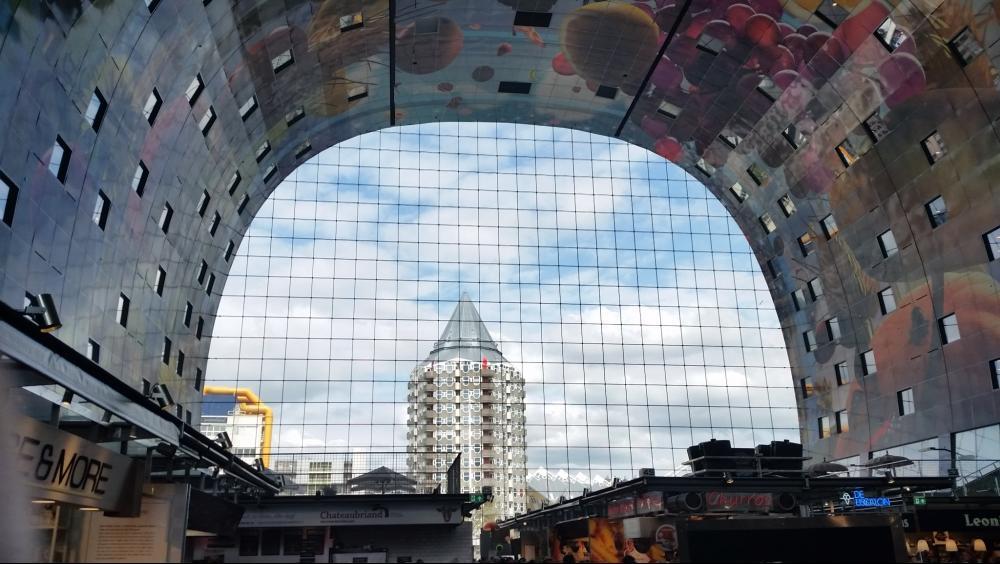IBIP Day 8 | A Food Frenzy

After exploring the city of Amsterdam on Sunday, we began our 2nd week and new day by visiting Albert Heijn, the largest Dutch supermarket. Before we explored the supermarket, our Dutch guide, Niek, introduced us to an interesting technology that helps Dutch consumers shop more efficiently. By using a smart phone, shoppers are able to electronically access their shopping list and view their past purchases. Once we began exploring the store, we were greeted by Mitch, one of the store’s shift leaders. Mitch was helpful in outlining why the store was set up in a way where fresh produce was placed in the front of the store and non-perishable items, such as frozen meats, were placed towards the end of the store. He explained that because fresh produce has shorter shelf lives and higher margins that these items need to be placed strategically so shoppers see these items first.
Mitch was particularly helpful with the Food Waste and Recycling group’s research, helping us to better understand how retailers such as Albert Heijn manage their food waste. He explains that his specific store experiences food waste loss of around 2% and that this wasted food is converted into animal feed.
After exploring through the Albert Heijn, we departed for Fenix Food Factory, a popular market that embodied aspects of the slow food movement. Here we were treated to a lunch where we picked from a variety of stalls that served finely aged cheeses, thinly cut meats, an assortment of baked goods, and cider. All in all it was a great lunch where we were able to witness how producers are able to directly connect with their consumers on a more personal level.
Our next stop for the day was to the Netherland’s “Second City,” Rotterdam. Here were given a tour of the remarkable new-age market called the Markthal. As we walked across the market and were given a tour many students were in awe of the beautiful architecture and the vast amount of different shops and stalls. The Markthal is a hub for producers looking to give their customers the experience of local fresh produce and meats. To obtain a lease at the Markthal, an entrepreneur must able to give the consumer “a unique experience.” Furthermore, the Markthal is not just a melting pot of different producers and stalls, but also a place to live. We were lucky to see the new Markthal open and bustling, as it just opened doors in the fall of 2014 after years of planning and building. For more information on this famous new landmark, see this article in The Guardian.
After the Markthal and before our boat cruise on the Rotterdam Harbor, we stopped at the Euromast, which is the tallest structure in Rotterdam. Some of the group made it all the way to the top in the spinning spire seat akin to the St. Louis Arch. Besides seeing all of Rotterdam from the sky, a few of us came upon a Dutch model in the middle of a photo shoot; some even got lucky and were allowed a photograph with her. When it was time we made our way across the street to De Beren Boot which was modeled after a well-known bear-themed Dutch TV show. We enjoyed a buffet dinner while taking in the sites of the harbor including the boat that used to take immigrants to the United States and is now a hotel. Finally we returned to the hotel to catch an extra hour of sleep before we started another day of company tours.